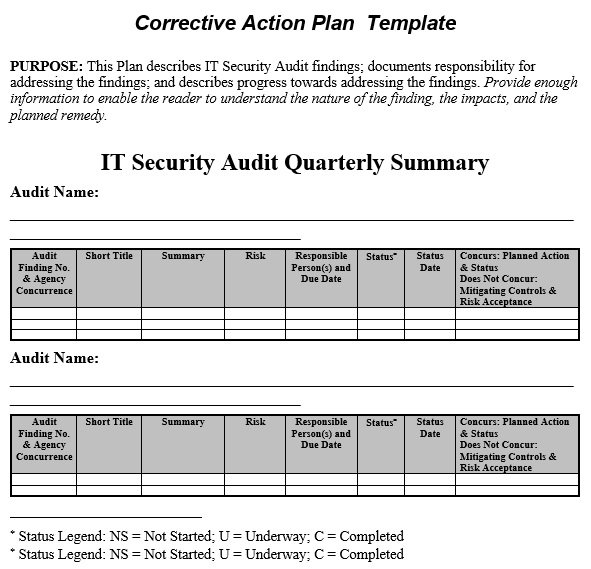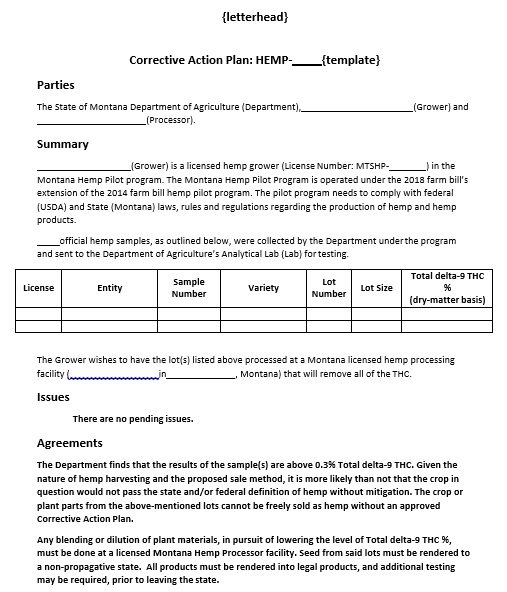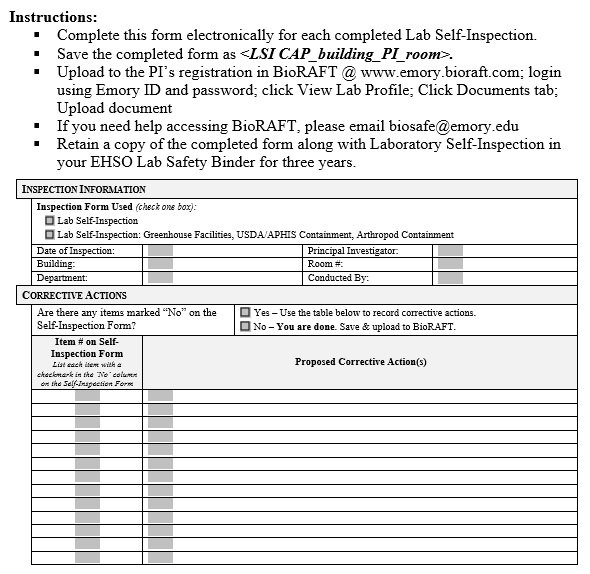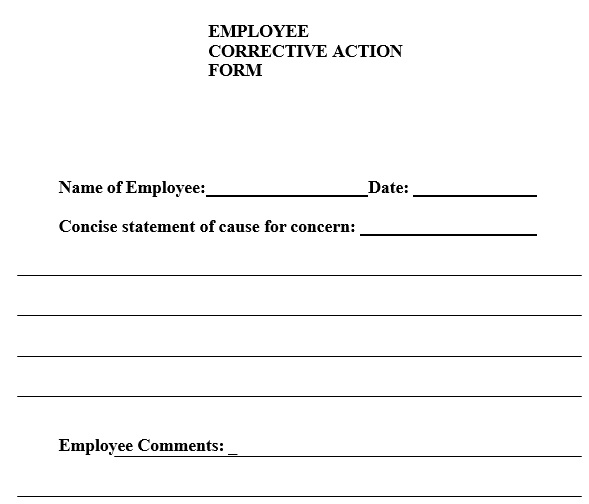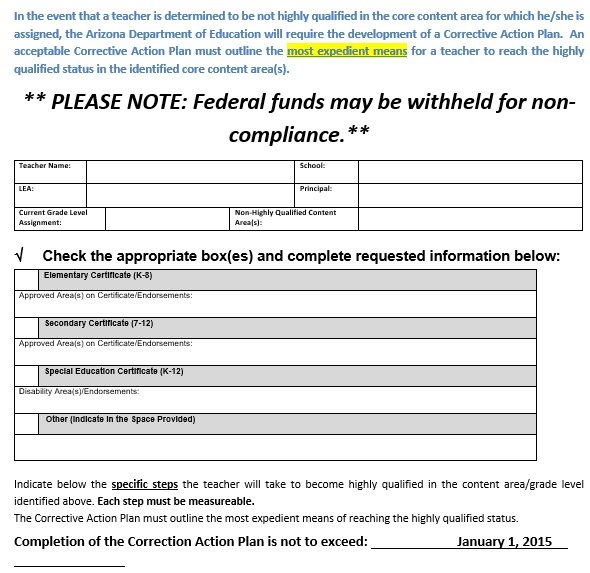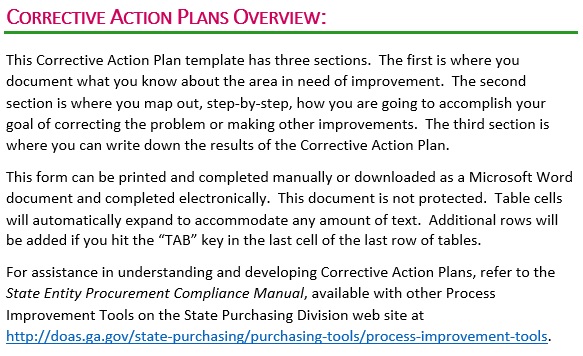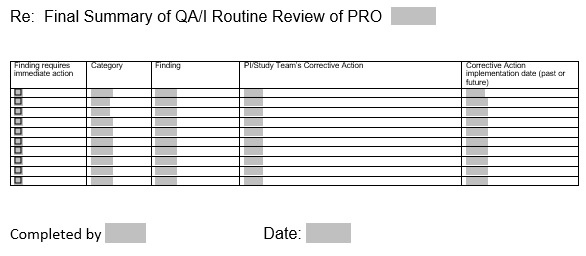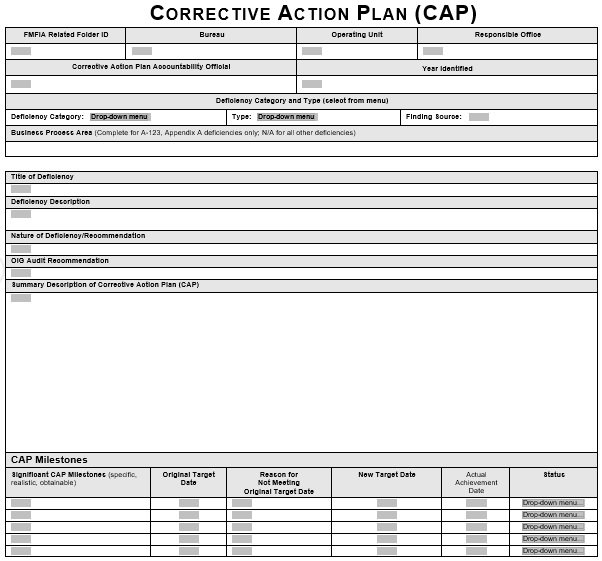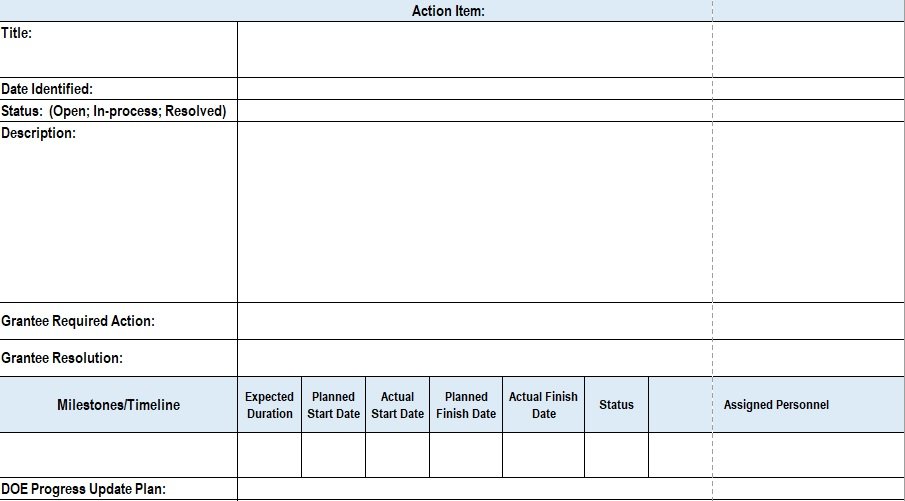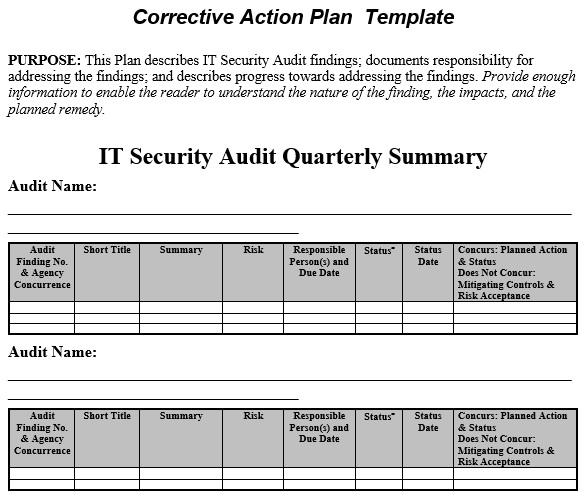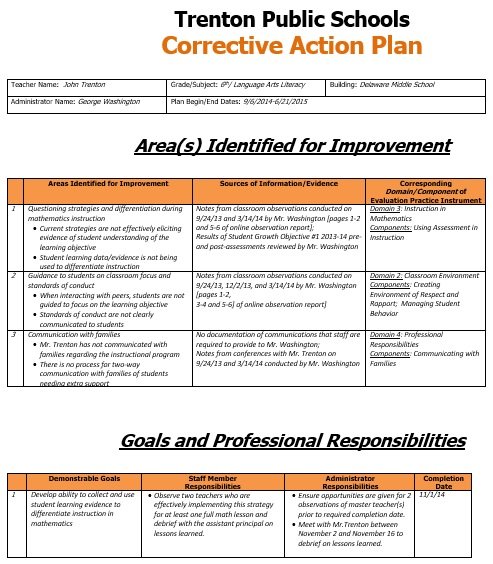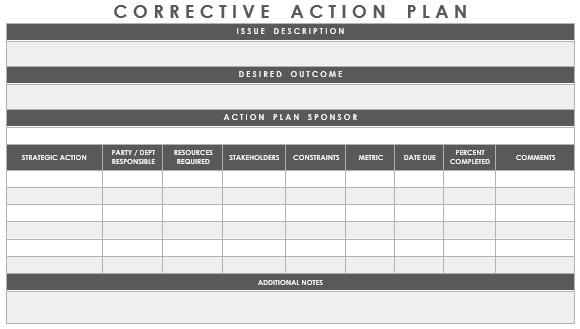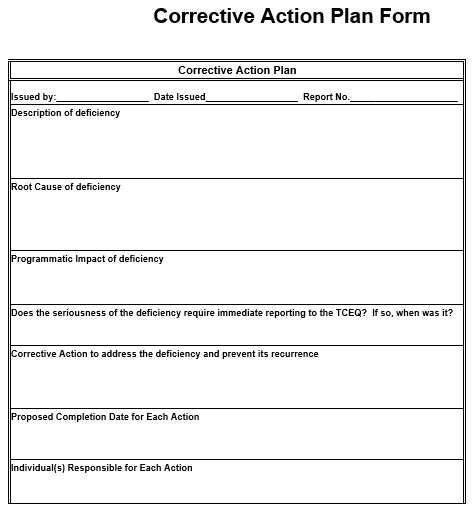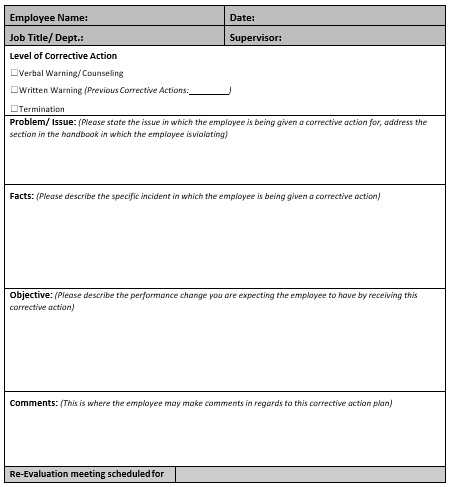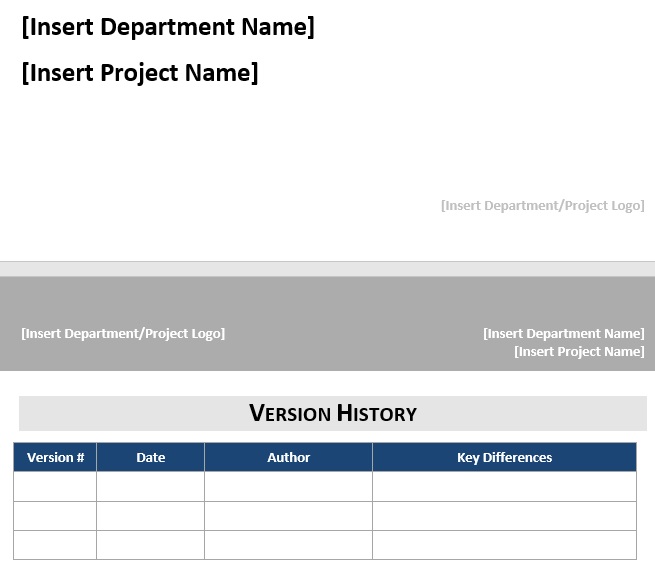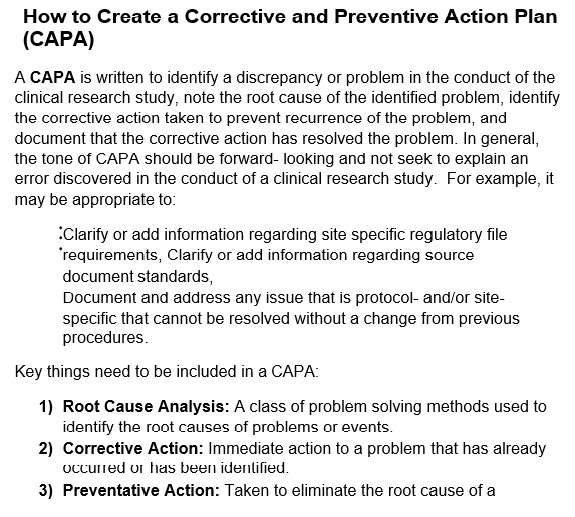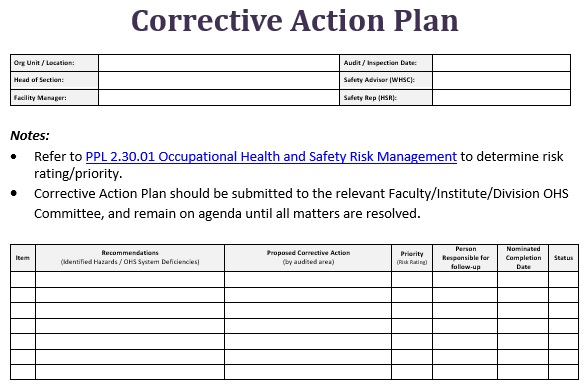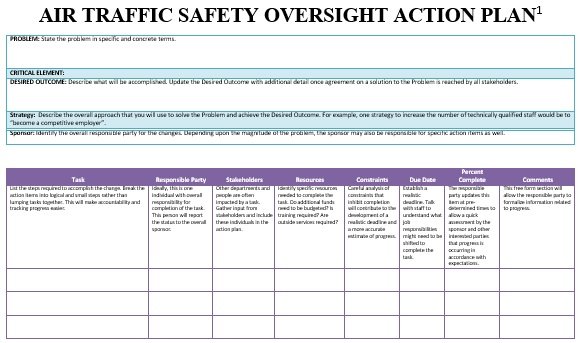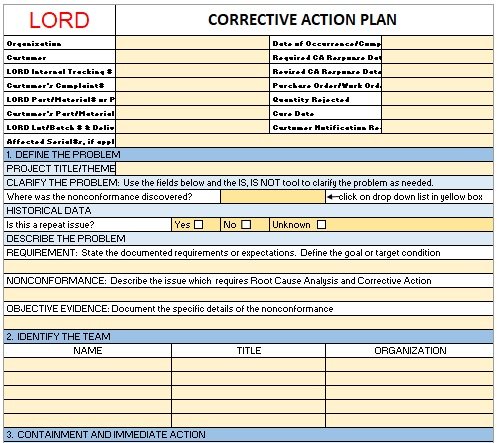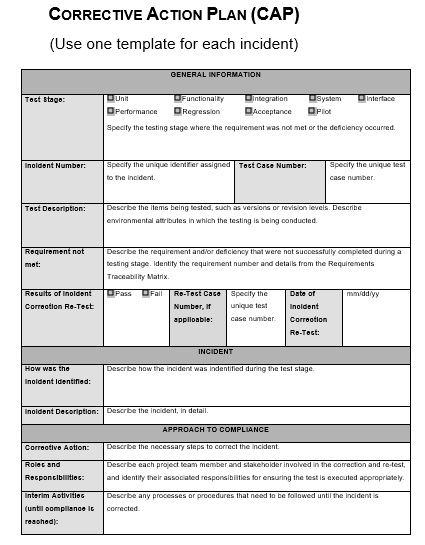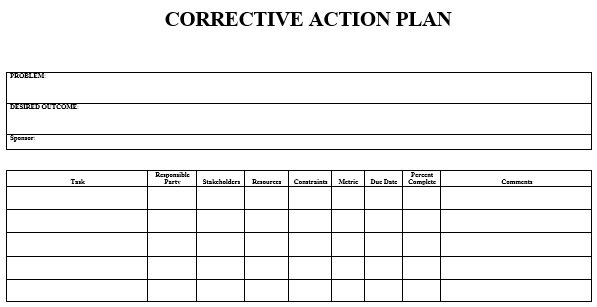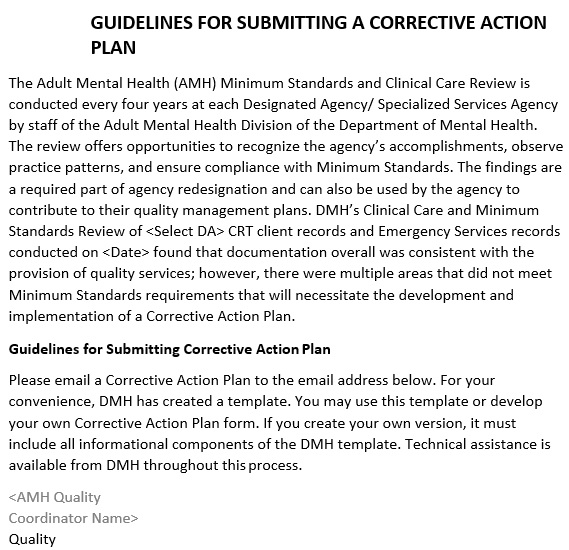A corrective action plan template is used in the circumstances where the process begins experiencing flaws and is not in line with the targeted goals. It usually happens in the work environment. To prevent these behaviors from happening again, you require remedial actions. The corrective action template comes in handy to write down the corrective actions of the situation as well as important details of the process.
Table of Contents
- 1 What is a corrective action plan?
- 2 When do you require corrective action?
- 3 The key elements of a corrective action plan:
- 4 Why should you use a corrective action plan?
- 5 How to write a corrective action plan?
- 6 Steps to implement a corrective action plan:
- 7 Conclusion:
- 8 Faqs (Frequently Asked Questions)
What is a corrective action plan?
A corrective action plan is used by the companies and organizations to deal with and prevent any undesirable behaviors and situations at work. With the help of this plan, you can determine the untoward incidents and undesirable behaviors. Then, you can deal with them in the most organized way.
Furthermore, you can create an official document with the help of a corrective action plan template. It offers guidance in the process. You can use different types of template that includes product redesigns, training, and other improvements.
To implement corrective actions, there are also different ways. For example, you can introduce company-wide modifications in conferences or meetings. The most common approach is a one-on-one meeting for things that involve a single employee. In case, your corrective action fails to handle the situation then you can take other steps.
When do you require corrective action?
You can apply corrective actions in different situations. However, applying these will depend on the department. You can use corrective action form in the following situations;
HR Application
After attempting to counsel, coach, or rectify the behavior of an employee, the managers in the HR department can use a sample corrective action plan. Corrective action in most HR departments consider as a disciplinary action. But, in other departments such as manufacturing and production, they take it the opposite approach. They used it to motivate the proper use of corrective action in processes as a part of the process of continual improvement.
Healthcare Application
A government regulatory agency may use a corrective action plan template in the cases that involve healthcare delivery services. Along with legal actions, to prevent sanction plans and audits, many prefer an effective corrective action plan.
Manufacturing for Medical Products
The Food and Drug Administration governs pharmaceuticals and medical devices. Therefore, it is the duty of the CAPA to avoid deficiencies by removing defective products.
The key elements of a corrective action plan:
The corrective action plan should include the following;
- A standard way of how to deal with deficiencies
- A process that is required to begin, investigates, and applies a corrective action plan.
- Verification of contractor or team member responsibilities.
- Clear development of the issues that need this plan.
- Details regarding available resources, stakeholders, metrics for accomplishment, due dates, progress updates, and more.
Why should you use a corrective action plan?
Here are the reasons that why you should use this plan;
- When you make a corrective action plan, you can correct errors in the most efficient way.
- You can use a corrective action plan template in case you want to make your business processes more efficient. This plan helps you in analyzing them and identifying ways to improve them.
- You can determine which aspects of a workflow can be improved or automated by having a corrective action plan template. Efficiency increases by automating your workflow.
- Your organization’s overall efficiency and effectiveness get increased as a corrective action template can be used to address problems in any area of your business.
How to write a corrective action plan?
It is important to first solve the issues that arises start with identifying the cause of what went wrong. The next step is that after creating a corrective action plan template where the real work begins that will fully resolve the issue. Here are the steps that you should follow to make your corrective action plan format;
Link to a compliance record
The corrective actions can’t exist automatically. To communicate the whole context of the issue, they commonly connected to significant areas of the compliance records. This indicates that you have to first link each corrective action to the corresponding source.
Establish the action items
The main purpose of employee corrective action examples is the development of action items that you will use to deal with the issue at hand. You can break this down into steps giving more details when necessary. This assists those involved in understanding what they must do.
Defined the workflow
You have to ensure that each of your corrective action steps passes through a number of key waypoints. Before you have formed the plan, the process may start. For example, someone wants to make a review of the starting event and analyzing the root cause.
In addition, the execution of the plan may need the involvement of various individuals. They help in creating opportunities for the issue to fall through the cracks. By removing the back-and-forth email exchanges that wastes so much time, a truly comprehensive corrective action process will prevent these from occurring.
Identify the responsible parties
The assignment of responsible parties is an important part of writing this plan. This may sound too obvious. But, there are some ways where you can power this process up.
At first, make a schedule of deliverables according to roles. This streamlines the process by making accountability around each of the action items. Second, in case the person doesn’t follow through, you should also consider what the process is. If a deliverable falls on a scheduled vacation, you come up with rules for who will hold the responsibility. You can do this by providing notice to a supervisor when someone drops the ball altogether.
Assess the risks
Assess the risks is the last important part of any corrective action plan that works. Also, you can do the risk assessment either at the start or the end of the corrective action process.
At the start, to calculate risk depending on the risk matrix that you have developed internally, each of the corrective action requests may include a level of criticalness. The most high-risk problems that need immediate addressing, you can filter out them before they start developing further issues.
Before resolving the request, you can also assess risk critically as it would be the perfect time whether or not performed action can reduce the risk acceptably. If the action not meets the requirements, it’s time to initiate the corrective action process.
Steps to implement a corrective action plan:
Here are the steps to implement your corrective action plan;
Determine the issue
At first, you have to investigate the underlying issue. The existing standard operating procedures or guidelines become too challenging to achieve due to some basic hurdles. However, you can find the solutions when you get into the core issues.
Plan your process
Plan your success after acquiring a comprehensive understanding of the issue in question. You have to do the following;
- Analyze the root cause of the issue
- Assess the nonconformance triggers such as audits, process specifications, and more
- Determine any other relevant issues
- For risk management, implement your protocols
- A realistic time period should be tested to test your plan
Write your corrective action plan
Take a sheet of paper, a pen, and start writing the details of your plan. You just have to include the following;
- The issue that you want to discuss
- A solution for improving or resolving the issue
- Your policies formal documentation
- Responsibilities of individual and team
Training the members of your team
You should hold a meeting with your training team to pay attention to your corrective action plan. On the basis of how big your plan is, this step is straightforward. The training may take weeks or months in case your plan pays attention to a bigger issue that affects your entire business. On the other hand, the training may only take a couple of hours in case it is only for one individual. You should describe the process from start to finish while planning your training.
Implement your plan
You have to set a date to implement your plan as soon as you have completed the training. Before the date arrives, you should make sure that you have a completed plan. For all of your employees, your plan should contain all the procedures, methods, and instructions in place.
Evaluate the results
You should set a date to test your plan while the planning process. You have to examine the results in the case time period has already elapsed.
Make adjustments to your plan
When you have examined the results, make adjustments to your plan to make a new process.
Conclusion:
In conclusion, you have to understand the underlying issue in order to create a corrective action plan template. When you have identified the issue, plan your process for improvement. Write down the details of your plan on a sheet of paper. Then, train the members of your team and after training implement your plan. Lastly, assess the results.
Faqs (Frequently Asked Questions)
When you are making your corrective action report, you should specify key indicators of success, a defined time frame, and metrics for completion. This way, the success of your corrective action plan can be easily measured and you can compile a report.
The corrective action assists in removing the cause of nonconformity as well as it prevents a recurrence. While, preventive action assists in removing the cause of a potential nonconformity or undesired situation.

